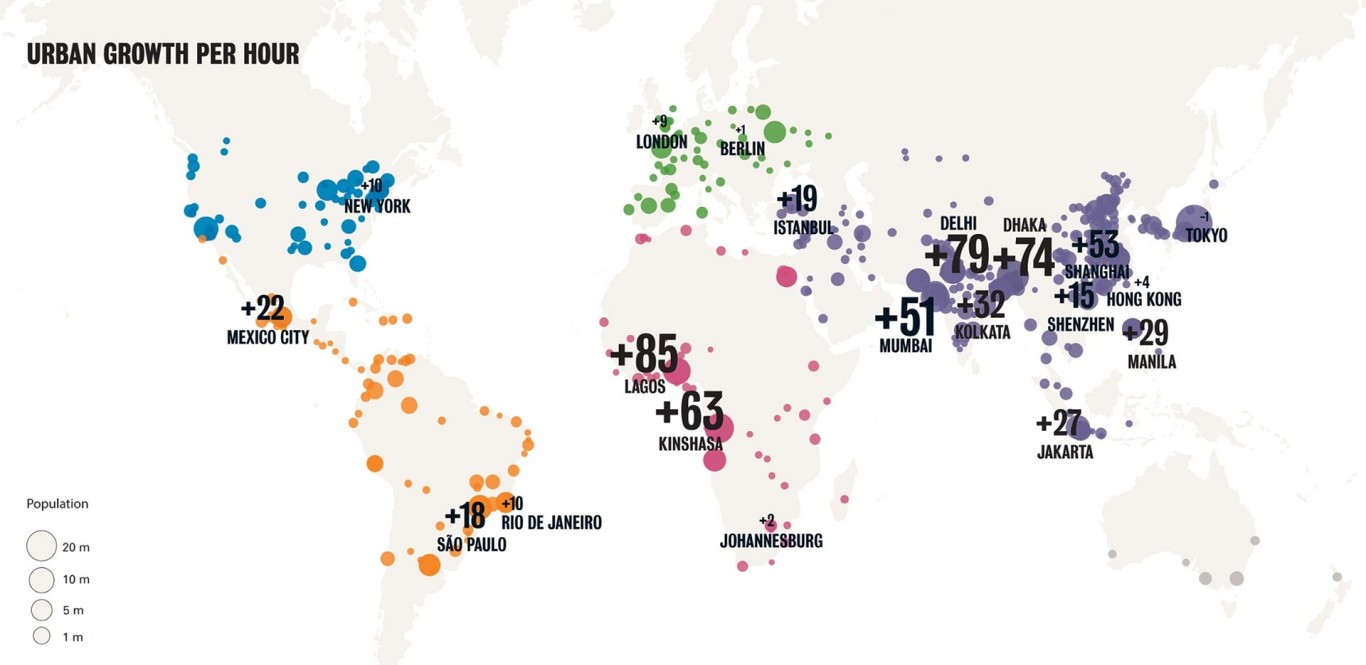By 2025, the Chinese city of Shenzhen will be home to more than 12 million people. In 1950, it was a fishing village with only 3,148 citizens.
In 1960, the only city in sub-Saharan Africa with a population of over 1 million people was Johannesburg. Ten years later, there were four. By 2010, that number had sky-rocketed to 33 cities.
Worldwide, urban areas are expanding. It is estimated that by 2050, 70% of the world’s population will be living in urban areas.
How fast are cities growing? That depends on the region in question. In Europe, 73% of people live in urban areas, South America 83% and North America 82%. That does not mean that the west has finished growing. Both London and New York are growing at a rate of 9 and 10 people per hour. London earlier this year reached a record 8.6 million inhabitants.
Neither Africa nor Asia have passed the 50% mark yet, but that is quickly changing. India and China, two of the world’s most populous nations, have been undergoing rapid economic development. Delhi is at 79 people per hour, Mumbai at 51. In China, Shanghai welcomes 51 new citizens an hour.
There is a large incentive for nations to urbanise. In 2012, 33% of the world’s population lived in large cities, accounting for 55% of the world’s economic output.
Article first appeared on; WEF



